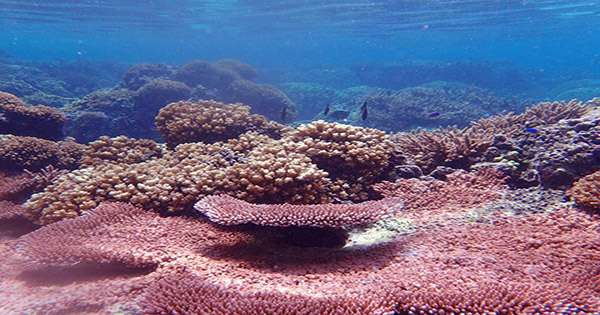Spooky white coral walls are one of the defining images of our drastically altered natural world, but a new study has found that not all suffering corals fade due to pollution and rising sea temperatures – with some dazzling hues and bright vibrancy. A new study from the University of Southampton in the UK has described an unusual process known as “color bleaching” that uses corals as an emergency recovery strategy to combat environmental change. Like bizarre motivational stories, adversity and alas help to make them brighter.
Richard Vevers, CEO and founder of The Ocean Agency, who was involved in the documentation of the 2016 colorful bleaching event in New Caledonia, commented in a statement given to IFLScience, “Corals seemed to be screaming for attention to the vibrant colors, trying to protect themselves from the heat of the sea. We’ve seen the final warning that the sea is in trouble.”
Corals get their drunken colors through a symbiotic relationship with tiny algae living in their tissues and unicellular zoos. Microorganisms provide food corals (and color through their photosensitive pigments), and corals shelter them. Unfortunately, if the water becomes contaminated or overheated, microalgae and zooxanthellae force the coral tissues to avoid it, but this can create stress on the happy relationship. Corals often do not lose their pigments, giving them a distinct white “bleached” appearance, they also lose their food supply, leaving them vulnerable and at risk of disease.
However, coral walls do not always become colored at the first sign of danger. In a new study published today in the journal Current Biology, coral walls show that they can undergo a process that tolerates light or short episodes of ocean warming, known as the “optical feedback loop”, that makes corals clearer with color.
The absence of microscopic partners in the coral allows more light to enter the internal tissues of the coral, increasing the production of pigments and photoprotective pigments. This creates a colorful layer that acts like sunscreen, blocks some UV light, and provides a condition that is conducive to a return to the zooxanthellae.
Professor Jörg Wiedenmann, head of the University of Southampton’s Coral Reef Laboratory, told IFLScience, “In some cases, very colored corals may be mistaken for health corals in particular, rather than under pressure ones. However, in most cases, there are some corals that bleach white due to the multicellular color involved, so in most cases, observers will realize that something is wrong.”
He added, “It has long been known that not all bleaching events are the same and a ‘ patchiness ‘ of the bleaching reaction is often noticed.” While this study further highlights how corals have the ability to recover from slight environmental changes, the overall picture is fairly black.
Last month, Australia’s Great Barrier Rift reportedly experienced its third coral bleaching event in five years. Things are made to get worse. Due to greenhouse gas emissions, world temperatures have risen by 1-degree centigrade in the last one and a half centuries or more. Even as the world limits global warming to 1.5 degrees Celsius above pre-natural levels, we can expect to see a further 70 to 90 percent loss of coral wall cover. The rise of 2 degrees centigrade, but the game is over for 99 percent of the world’s reefs. If no steps are taken to mitigate climate change in the next decade, most of the world’s coral reefs are likely to move by the end of this century.














